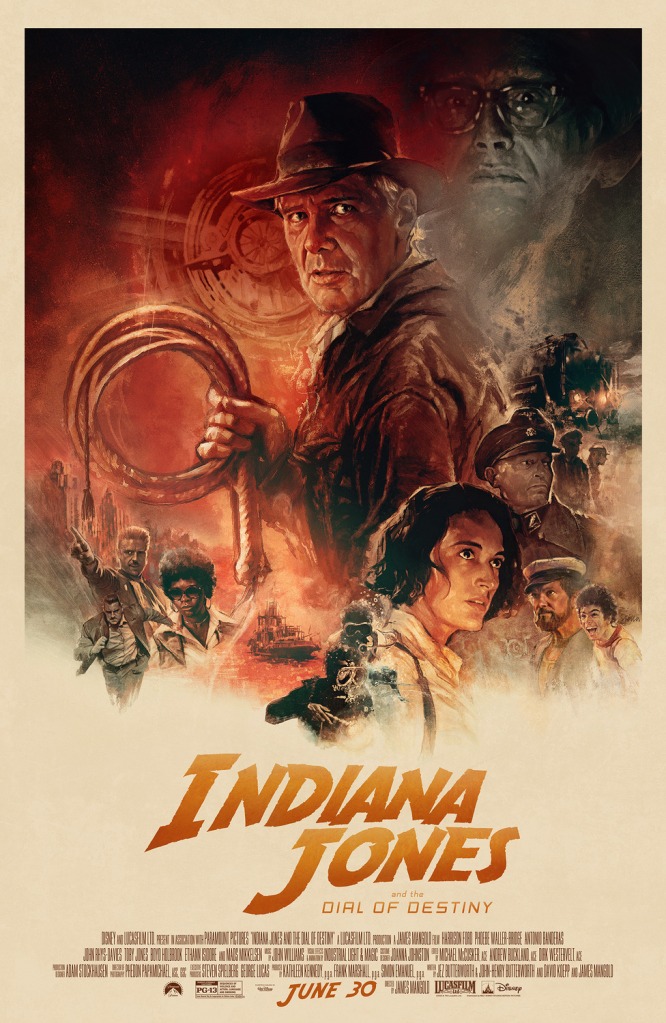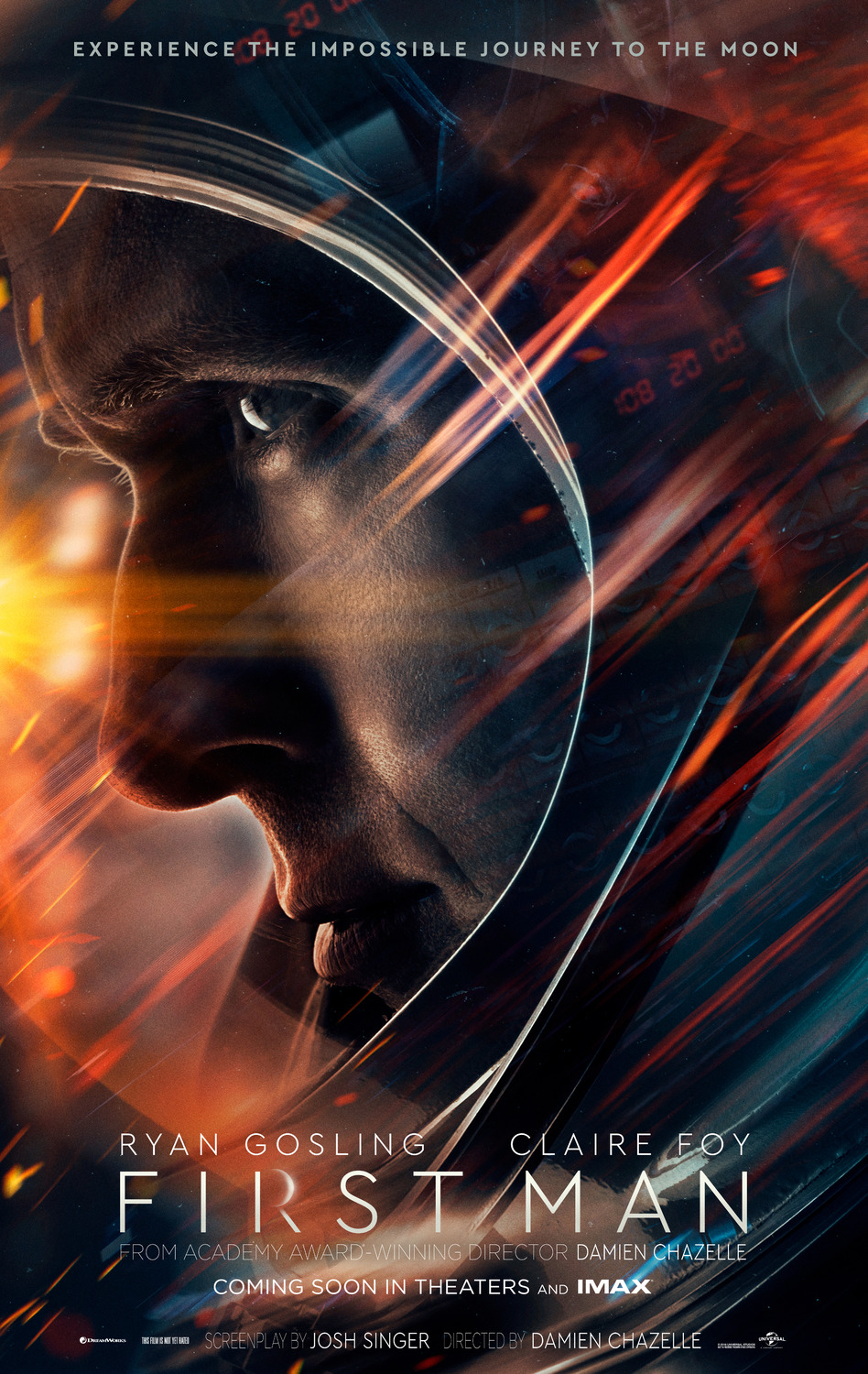‘Indiana Jones and the Dial of Destiny’ – Yes, I Liked It

Leading up to the release of “Indiana Jones and the Dial of Destiny,” I was often reminded of a piece of dialogue from “Live Free or Die Hard” in which Thomas Gabriel described John McClane as being “a Timex watch in a digital age.” This was certainly the case when Harrison Ford put back on that fedora and bullwhip in 2008 with “Indiana Jones and the Kingdom of the Crystal Skull,” and it remains the case with this fifth and final installment in this thrilling franchise. While practical effects were the thing for Steven Spielberg and company back in the 1980’s and 1990’s, CGI has taken over to give some de-aging power to Ford and to create, or even re-create, those creepy crawlers Indiana hates with a passion. Indeed, times did change for Dr. Jones and us but, like him, I wonder if we can adjust to the changes from what we grew up on and loved.
Following an exciting prologue in which Indy and fellow archaeologist Basil Shaw (Toby Jones) discover half of Archimedes’ Dial during the last days of World War II, the action then shifts to 1969 where we find an aging Indiana Jones being woken up by the Beatles’ “Magical Mystery Tour” and teaching classes at New York’s Hunter College. And while the students at the university he previously taught it had crushes on him, the ones he teaches here could not care less about artifacts from the past, especially when man has only recently landed on the Moon with the Apollo 11 mission. At this point in his life, Indiana has become a curmudgeon of sorts, and anyone has to be considered such if they don’t like any songs by the Beatles.
Into the picture comes the Helena Shaw (Phoebe Waller-Bridge), Basil’s daughter and Indy’s goddaughter, who herself has a degree in archaeology and is eager to find the other half of Archimedes’ Dial. This is the prize of this Indiana Jones installment as this device is said to locate fissures in time. That’s right, Indy and company are dealing with an artifact which allows for time travel, so you know the spacetime continuum rules from “Back to the Future” will come into play at some point.
With its middling reception at the Cannes Film Festival, and with many fans still complaining about how bad they thought “Kingdom of the Crystal Skull” was with its aliens and nuking the fridge, I think one should go into “Dial of Destiny” not expecting the greatest action movie of all time, but instead an Indiana Jones film directed by James Mangold. Having given us such excellent films like “Logan,” “Copland” and “Ford Vs. Ferrari,” he takes over director’s chair from Spielberg and gives us something he cannot completely make his own, but that’s okay because this is not a franchise in need of too much change.
Okay, let me get some of my issues with “Dial of Destiny” out of the way here. At 154 minutes, this film could have used some tightening. There are moments where the story and action drag when they should not, and my mind did wander at times And yes, sometimes the CGI effects took me out of the film such as when our characters encounter those eels which could only hope of being as scary as the one in “Jaws: The Revenge” or those thousands of snakes in “Raiders of the Lost Ark.”
Still, I was very much entertained by “Dial of Destiny” as it does have the heart, soul and the action we come to expect from these action extravaganzas. When it comes to Ford, I am glad he gave us one last go around as the man with the hat. With each “Indiana Jones” film, he gives us a different side of this iconic character. In this one, Indy is a broken man on the verge of retirement and living in a time which does not seem to have much use for him. Marion Ravenwood is in the process of divorcing him, and the retirement gift of a clock from his staff is one he is understandably quick to give away to a stranger. Despite all the great adventures he has been on in his lifetime, no one outside his inner circle knows or cares about what he has been through. As for the villains of this piece, he is only a means to an end for them as he simply holds the key to an artifact which is far more interesting to them than anything else.
While the Nazis were a thing of the past in the previous installment, they are back in force this time around as Jurgen Volter (Mads Mikkelsen), a former Nazi whom Indy encountered back in World War II, looks to correct the mistakes Adolf Hitler made years ago and to where the world a better place to live in. Mikkelsen plays Jurgen in the same way he played his James Bond villain in “Casino Royale,” as a man with a cool façade who eventually unravels when things do not go his way. While I hoped Mikkelsen would have had more fun playing this Nazi sympathizer in the same way Alan Rickman did when he played a most memorable villain in “Die Hard,” he does give Indy the formidable foe this picture needs.
And there is no escaping Phoebe Waller-Bridge when it comes to reviewing “Dial of Destiny.” Does this film have too much of her character, Helena Shaw? Perhaps, but can you blame Mangold and company for featuring so much of the “Fleabag” star? She is such an infectious presence in life, let alone in this film, and she gives the proceedings the excitement and enthusiasm it desires. Also, like many classic characters in this franchise, she has quite the poker face which eventually comes apart as Helena gains a perspective on life which affects her original stance of being in this just for the money.
Other than that, we have John Rhys-Davies returning as Sallah, Indy’s longtime friend who was sorely missing in the last film. Antonio Banderas is a fun presence as another friend of Indy’s, Renaldo, who captains a boat Indy and Helena set sail on. Shaunette Renée Wilson gives us an interesting presence as Mason, a US government agent who represents the kind the FBI and CIA recruited back in the 1960’s to infiltrate certain groups like the Black Panthers. And I enjoy seeing Boyd Holbrook (“Logan” and “The Predator”) here as Klaber, a right-hand man to Jurgen Volter and an especially nefarious individual who is quick to kill someone without a second thought.
As for Mutt Williams, Shia LaBeouf’s character from “Kingdom of the Crystal Skull,” he does not appear here, but he is mentioned. I think this was a smart move on the part of the filmmakers because to pretend this character never existed would have been thoughtless to where he would have come across as total mistake in retrospect.
When it comes to “Dial of Destiny’s” final act, many have described it as being “bonkers,” but these people are the same ones who decried “Kingdom of the Crystal Skull” for being “unrealistic.” While these films take place in historical periods which have long since passed us by, the filmmakers do a great job of capturing those time periods with a good deal of authenticity to where it vividly comes to life. This helps ground the action in a reality we know and understand while the fantasy elements reign supreme on the silver screen.
I cannot spoil the last half of this film for anyone, but I loved how it proved a few things for me and, I sincerely hope, many others. When it comes to mathematics, it is more useful tool in life than we realized while in high school as it truly provides us with a universal language. Also, when certain characters do not take continental drift into their plans, I hope this reminds everyone around the world about how science can only be refuted by more science, and it made me love this film’s final act all the more.
When it comes to “Indiana Jones and the Dial of Destiny,” I think we are coming into this one with a lot of trepidation as expectations are so hard to deliver on or surmount. A lot of people had their daggers out for this one before it was released as they wanted it to be a certain kind of motion picture, and while many of them will not get past their individual prejudices, I hope there will be enough to accept for this film for what it is as opposed to what they want it to be. It has its flaws as most films do, but this one still had me engaged for the most part, and I walked out of the theater with a smile on my face as seeing Indiana grab that fedora of his was a most pleasing sight. I expected a fun time at the movies, and that is what I got.
And yes, we do get another monumental music score from the great John Williams which adds to the action in a glorious way. Even at 91 years old, this man still knows how to deliver, so don’t tell me someone is too old to do something. I hope, if I ever reach that age, that I can still be every bit as creative.
* * * ½ out of * * * *

